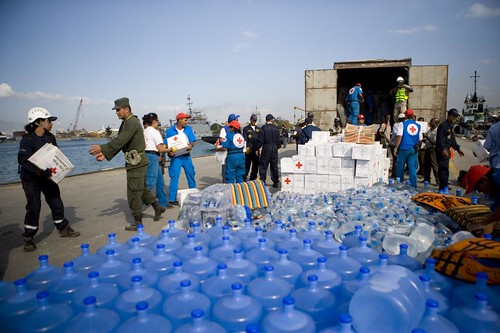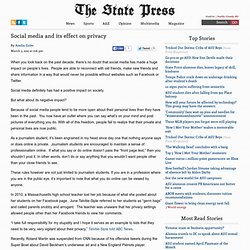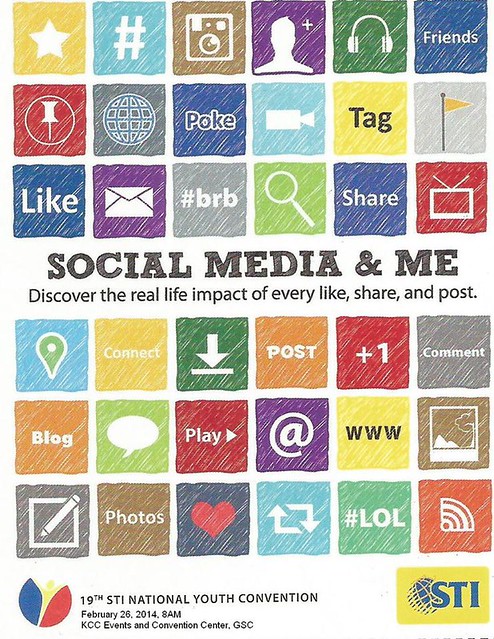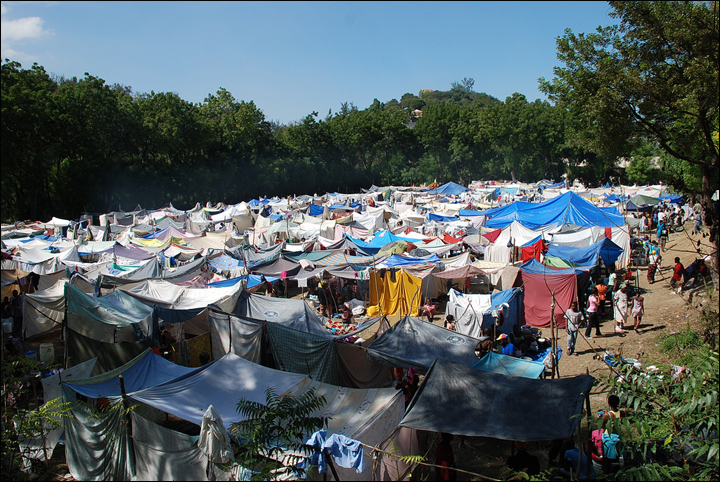The country of Haiti is located in the Caribbean Sea,
which is just south of the Gulf of Mexico. The Caribbean Sea is home to a lot
of the world's island. The capital is Port-au-Prince, which is located in the
middle of the country right next to Golfe de la Gonave. The whole county is
about 10,700 square miles. It contains an estimated 6,867,995 people this is
about 642 people per square mile. This is actually quite dense considering that
the United States has about 76 people per square mile.
A 7.0 earthquake struck Haiti on 12 January 2010. The earthquake directly affected
Port-au-Prince Léogane, Petit and Grand Goave and Jacmel, causing over 222,570
deaths and 300,572 Injuries. The earthquake compounded pre-existing problems of
structural problems, severe poverty and low development, very limited access to
education, health and sanitation services.
Haiti earthquake occurred at an unexpected time which made it hard for
its people to continue a normal life.
The success of an earthquake depends on the techniques
used such as: mitigation, prevention, preparedness, response, and
recovery.
1. Mitigation is an effort to reduce loss of life and
property by lessening the impact of earthquakes.
2. Prevention is to stay aware of where you are, and
exposure to disease or injury.
3. Preparedness
is while disasters may be unpredictable, important steps can be taken before a
disaster occurs to minimize the threat of damage.
4. Emergency response is precautions in the event of a
disaster. No matter the type of catastrophe, proper emergency response can
protect and even save lives. By having a full knowledge of the surroundings,
keeping a supply of rescue goods, and having a detailed plan emergency response
can allow better chance of safety in any situation.
5. Disaster recovery is the ability to continue to
work after a catastrophic event.
We know that when a natural disaster occurs people are
forced to flee their homes and others who remain within their own country, are
known as internally displaced persons (IDPs). Today, more than 27 million
people are internally displaced by conflict according to the Internal
Displacement Monitoring Centre.
OCHA led the humanitarian response to Haiti’s
devastating earthquake in January 2010, which killed 217,300 people and affected
2.1 million Haitians. OCHA (The United Nations Office for the Coordination of
Humanitarian) is an inter-agency body, serving UN agencies and NGOs in the
humanitarian domain.
OCHA's mission is to:
• Mobilize and
coordinate effective and principled humanitarian action in partnership with
national and international actors in order to alleviate human suffering in
disasters and emergencies.
• Advocate the
rights of people in need.
• Promote
preparedness and prevention.
• Facilitate
sustainable solutions.
OCHA will focus on supporting the Government to
identify and implement durable housing solutions and accelerate recovery
efforts. It will address security concerns for vulnerable groups, such as the
elderly, women and children, and strengthen access to basic services, such as
water and sanitation. OCHA will support national authorities to lead a
comprehensive response to the cholera epidemic, and work to strengthen national
disaster preparedness and contingency planning.
For example
when the earthquake occurred in Haiti 1.5 million people resided in 1,354 spontaneous
settlements. 810,000 people in 1,150 camps.
We also know that living in camps requires a lot of
responses. For example in Haiti 95 per cent of camps were monitored regularly
with the Data Tracking Matrix to track levels of service raising awareness on
difficulties. Mitigation works carried out in 42 camps. Over 8,000 IDPs
relocated to planned sites.
Also, between 10 million and 11 million cubic metres
of rubble. As more than two thirds of the population did not have formal jobs,
support for livelihoods is essential following the earthquake. After it between
10 and 15 percent of rubble managed. Between February and November 240,000
people were employed through Cash/Food-for- Work schemes through 231 projects.
WFP reached 400,000 beneficiaries through Food/Cash-for-Work programmes focused
on rubble clearance and canal cleaning.
Education
4,992 schools
were affected by the earthquake, of which 3,978 were damaged or destroyed. 80
per cent of schools in Port-au-Prince and 60 per cent of schools in the
South-East and West departments destroyed or damaged. Humanitarian response:
2,100 (68 per cent) damaged schools cleared of debris. 12,895 teachers and
7,592 education staff trained, including in psychosocial support for
traumatized children. 842,097 school-children benefited from provision of basic
learning materials. 2,729 temporary learning spaces replaced destroyed schools.
1.1 million children receive daily meals through the National School Feeding
Programme.
Food
Food assistance required, initially for those
displaced by the earthquake. Humanitarian response: 4.3 million people received
food rations in the weeks following the earthquake. From January to March
18,747 tons of food delivered to families in Port-au-Prince. 76,000 people in
hospitals and orphanage received meals in the days following the earthquake.
Health
Earthquake-affected populations required primary
healthcare and monitoring. Destruction or damage of 30 hospitals. Vaccination
against disease was essential, especially in IDP camps. Humanitarian response:
Over 400 health partners providing assistance. 345,000 health kits with
medicines and supplies such as antibiotics, vaccines, anaesthetics and
analgesics distributed. 4,000 emergency amputations carried out. 90 per cent of
IDPs in Port-au-Prince have access to health clinics. Psychosocial support and
activities provided in 25communes. By May 900,000 vaccinations administered to
vulnerable populations. 2,500 units of blood imported and distributed in 45
days following the quake.
Logistics
Major needs or concerns: The need to import and
transport humanitarian relief supplies to affected populations. Congestion at
entry points: airports, ports, border crossing points. Lack of specialized
vehicles not available on the commercial market were required to access remote
areas. Humanitarian response: 13,000 metric tons of life-saving relief items
were dispatched from Port-au-Prince to the areas in need. 1,300 truck loads
dispatched from the Dominican Republic to Haiti, delivering more than 9,300
metric tons. The UN Humanitarian Air Service transported over 14,700
humanitarian passengers, flew to 100 isolated villages, dispatching 1,200
metric tons of relief items.
Shelter and NFIs
Major needs or concerns: At the peak, 2.3 million
people left their homes. 188,383 homes collapsed of which 105,000 were
completely destroyed. 162,000 families live in emergency shelter. 114,456 tents
and 1,086,513 tarpaulins distributed. Over 2.4 million non-food-items
including. 120,673 toolkits and 242,362 kitchen sets. 31,656 transitional
shelters constructed, providing 158,000 families with safer shelter. 342,550
residences structurally assessed; over half structurally sound.
Water and Sanitation and Hygiene (WASH)
Major needs or concerns: Sanitation and drinking water
for affected populations, especially in spontaneous settlements. Waste
management, especially in spontaneous settlements. Humanitarian Response:
Sanitation and drinking water for affected populations, especially in
spontaneous settlements.

Waste management, especially in spontaneous
settlements. Basic water and sanitation needs met for over 1.7 million people
following the earthquake. At least five litres of drinking water per person is
being delivered to 1.2 million people daily transporting of over 6,200 m³ of
water daily. Over 11,000 latrines constructed. 87,300 hygiene kits distributed;
each kit is designed for a family of 5 for up to three months. Over 2,200
Hygiene Promoters and Community Mobilizers actively disseminate Government
approved WASH messages. Nutrition Major needs or concerns. Approximately 15,000
children suffer from severe acute malnutrition; one in three children in Haiti
is estimated to be chronically malnourished.
Humanitarian response: Over 107 baby-friendly tents
and spaces established to promote proper infant and young child feeding.
102,035 children and 48,913 mothers benefitted from nutrition counseling. Over
70,000 moderately malnourished children admitted into selective feeding
programs. Over 500,000 children 6-59 months and pregnant and lactating women
received monthly supplementary feeding.
Protection Major needs or concerns: Protection rights
of people living in IDP camps and surrounding deprived areas. Rights to be
protected from harm, including sexual violence.
Humanitarian response: IDP Camp security needs
assessments conducted. 109 solar lights in 40 camps, to improve security.
Protection and human rights trainings for camp managers, NGOs, and the police.
Communicating
with Disaster Affected Communities (CDAC) helped facilitate the communication
of lifesaving humanitarian information and supported local media across the
affected area. 74 per cent of farming households in affected areas have been
reached with assistance, including 1,874 tons of seed, 6 million roots and
tubers for starch crop planting, 100,000 banana plants, 14 tons of vegetable
seeds, 87,563 hand tools, 9,345 tons of fertilizer and 170 tons of compost. The
2010 revised Haiti Earthquake Appeal envisages activities costing $1,502
million over a one-year timeframe. Contributions have been received for 72 per
cent.
While much progress has been made in helping the
country recover, the requirement for strong humanitarian coordination is
expected to continue in the future.
A.Xh























